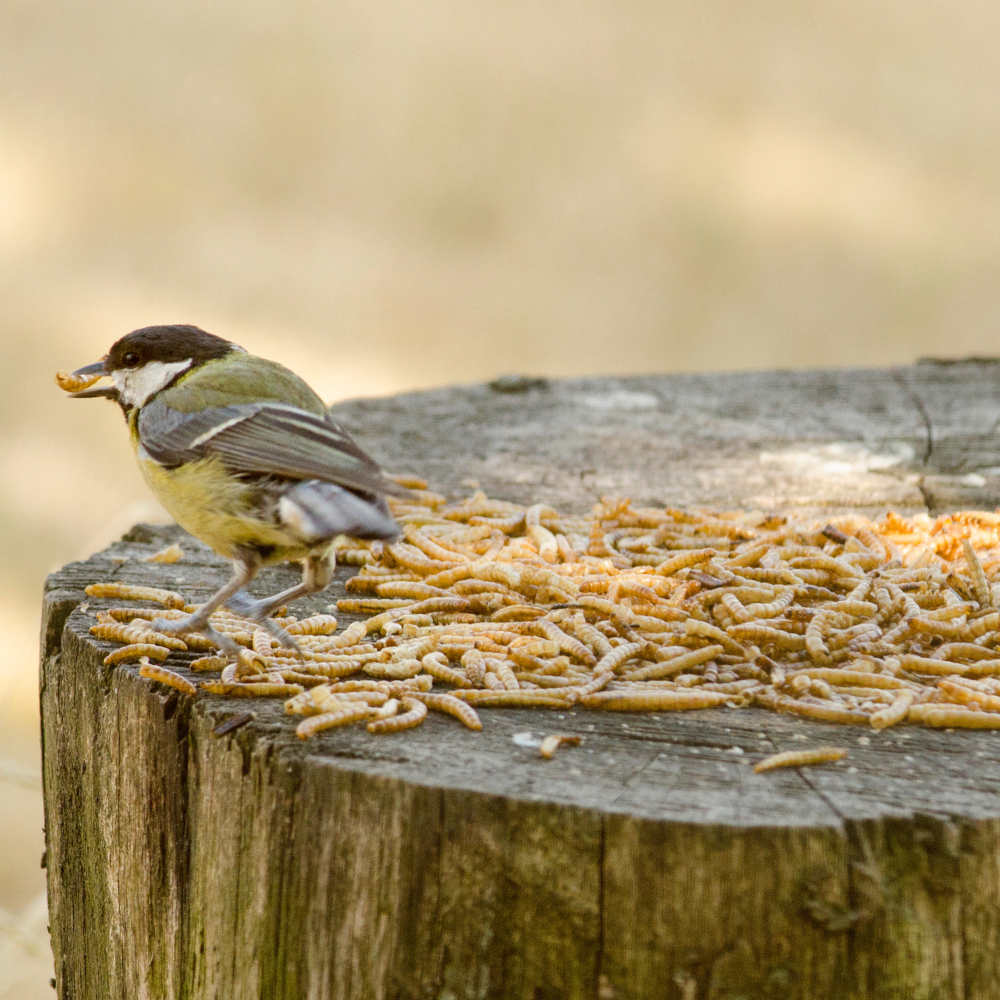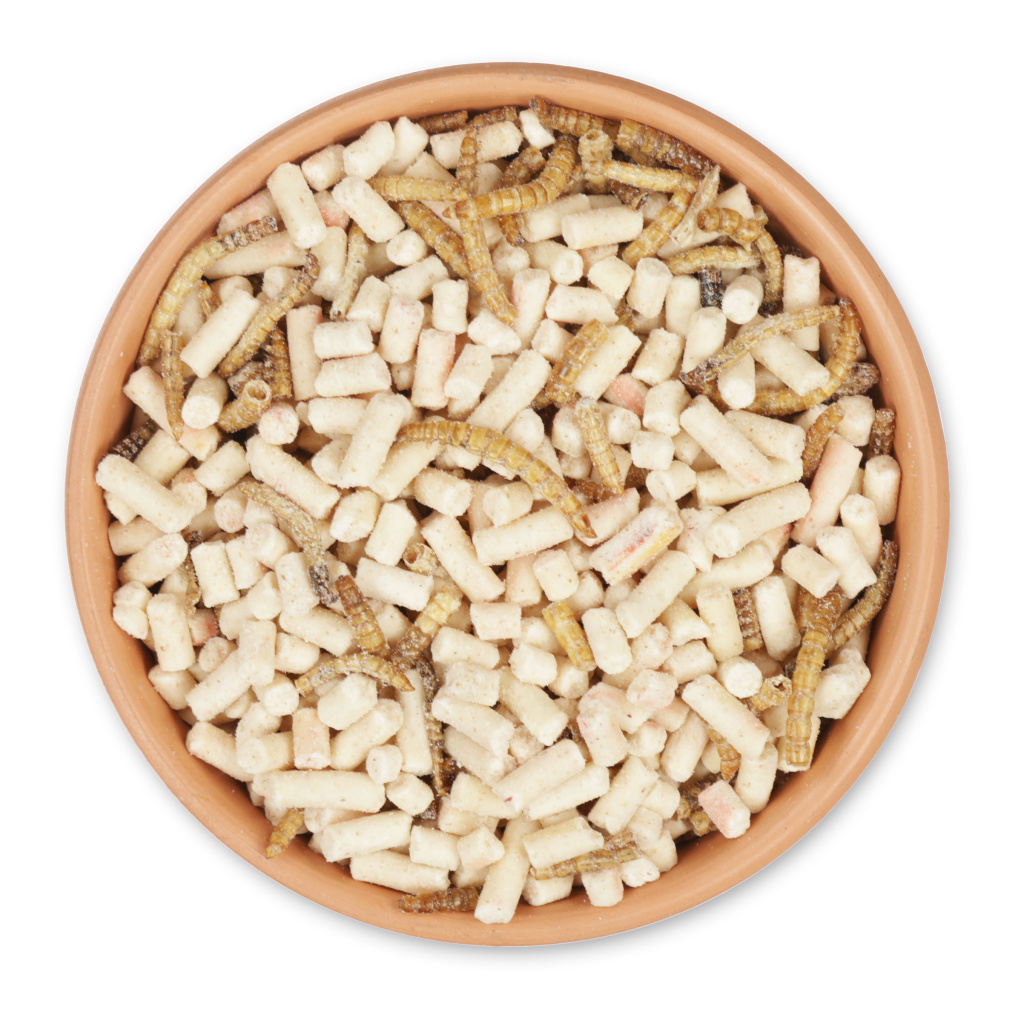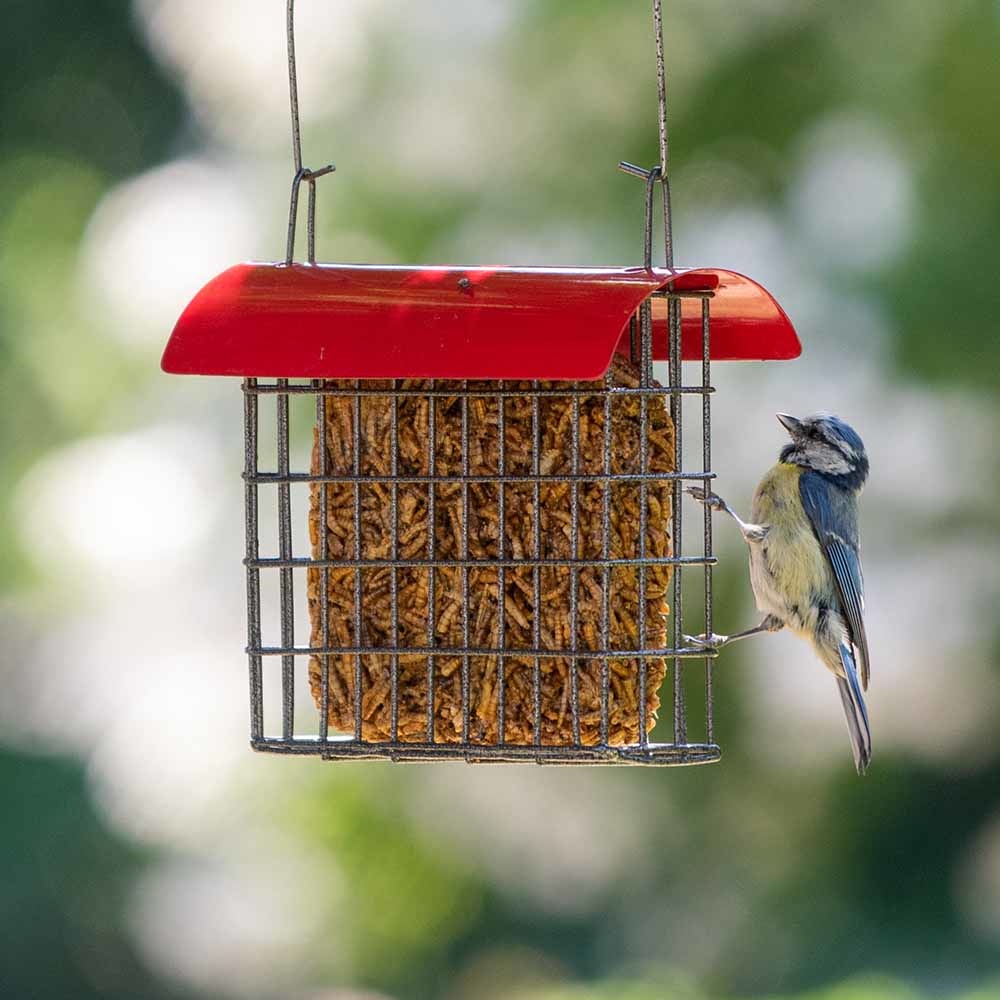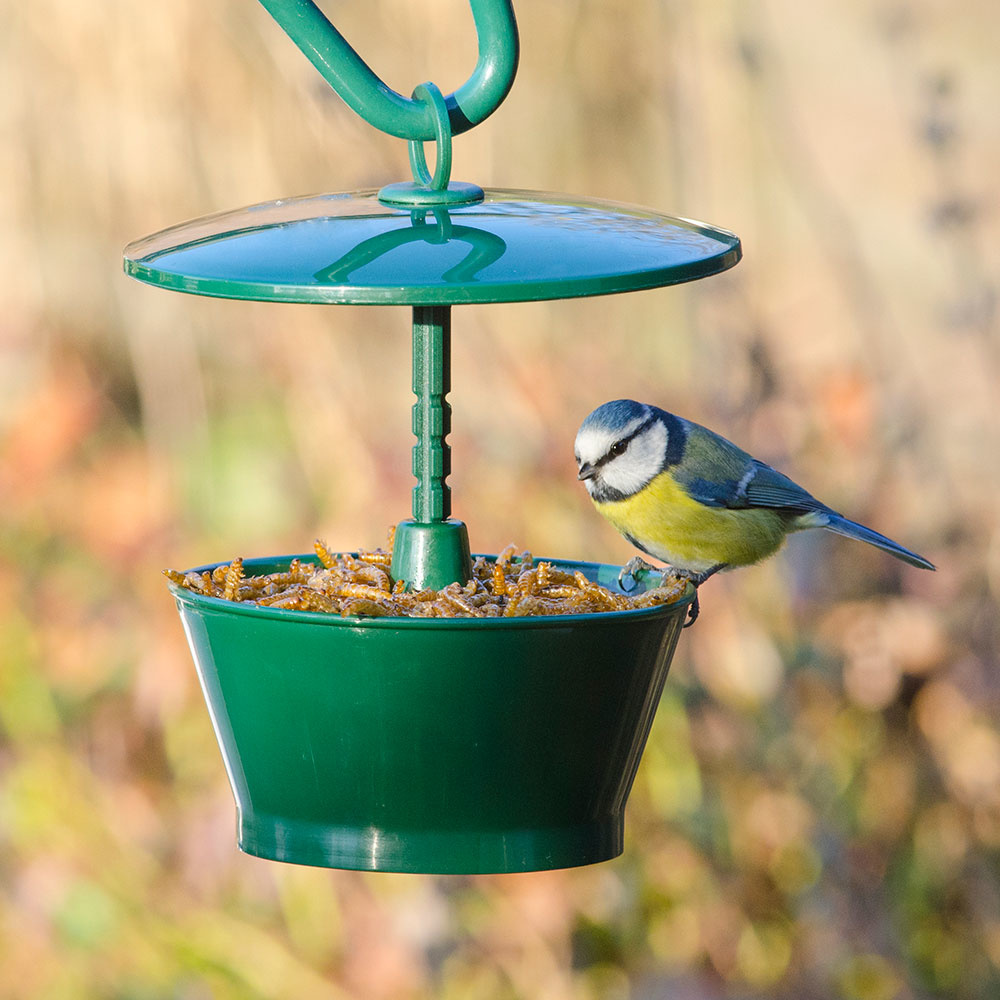Dried Mealworms for Birds
Give your garden birds a protein-rich treat with our dried mealworms and calciworms. This natural bird food is ideal for robins, blackbirds, tits and wrens, packed with energy to support them through breeding, moulting and fledging.
Why choose mealworms as bird food?
Mealworms are a favourite bird food for insect-eating species across the UK. They’re rich in protein, easy to serve, and ideal for supporting birds during demanding periods such as nesting, fledging and winter feeding. Dried mealworms offer all the benefits of live mealworms — without the mess, storage issues or perishability.
Are dried mealworms better than live mealworms?
Yes – dried mealworms are safer, more convenient, and still highly nutritious. They can be stored for longer, are easier to handle, and can be soaked in water to add moisture during dry weather or chick-rearing seasons. They're a reliable bird food alternative to live insects, with less waste and no fuss.
Why feed calciworms too?
Calciworms are the larvae of the black soldier fly and contain even more calcium than mealworms. This helps birds with bone development and eggshell formation – especially important during the breeding season. Offering both dried mealworms and calciworms provides a more balanced diet for your feathered visitors.
Benefits of mealworms and calciworms
- High in protein – Supports growth, feather health and energy levels.
- Mess-free feeding – No refrigeration or spoilage.
- Great for young birds – Easily digestible and appealing.
- Appeals to many species – Especially robins, blackbirds, tits and wrens.
How to serve dried mealworms
Scatter them on the ground, add them to a bird table, or offer them in a mealworm feeder. For chicks or in warm weather, soak dried mealworms in warm water for 15–30 minutes before feeding.
Which birds eat mealworms?
- Robins – A favourite food, especially in spring and early summer.
- Blackbirds and thrushes – Often seen feeding on the ground.
- Wrens and dunnocks – Small birds that love soft, protein-rich food.
- Blue tits and great tits – Eager visitors to feeders offering mealworms.
Why choose CJ Wildlife’s dried mealworms?
We’ve provided wildlife-friendly bird food for over 35 years. Our dried mealworms and calciworms are responsibly sourced and packed to the highest standards for garden birds.
- Mealworm bird food specialists – Trusted by bird lovers across the UK.
- Available in bulk – Choose the right quantity for your garden needs.
- Fast UK delivery – Get your bird food quickly and reliably.
- No artificial additives – Just clean, protein-rich nutrition.
Feed your garden birds the very best with dried mealworms and calciworms from CJ Wildlife — a natural bird food they’ll return for time and again.







.jpg)

